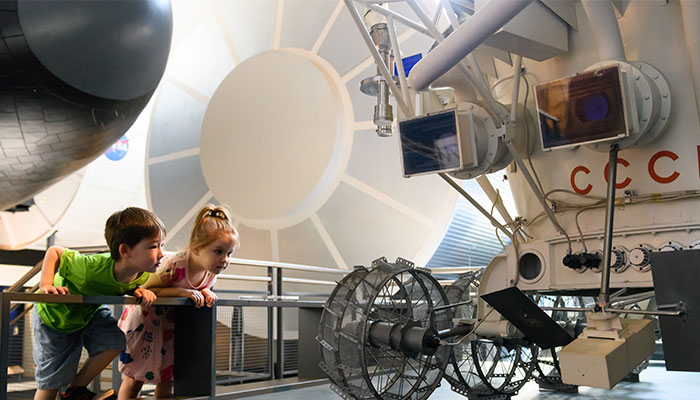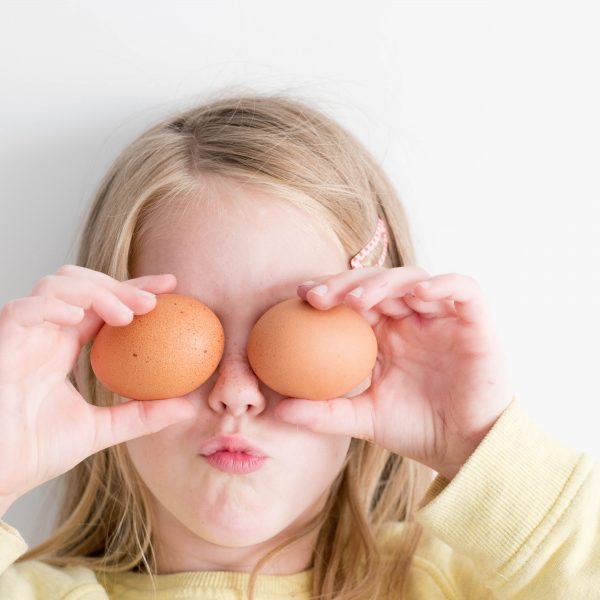Researchers unlock how to keep children engaged with museums

New research led by Associate Professor Sheila Degotardi from Macquarie University is prompting museums to go further than the traditional approach of dedicating a separate space for their pre-school aged visitors.
The research will be of interest not only to those in the galleries, libraries, archives and museums (GLAM) space, but also for those working in early childhood education and care (ECEC) contexts, as they seek to remain current with cross sector developments which may influence their own practice.
The study was conducted in partnership with the Powerhouse and Maritime Museums in Sydney’s Pyrmont, finding that even very young children will learn more and enjoy themselves more if curators include something for them in all exhibitions.
Associate Professor Sheila Degotardi spoke about the role that museums play in helping to create lifelong learners.
“That’s why it’s important to get children coming in from when they are really young. Our research found that children and parents learn together when their curiosity is sparked by the same exhibits and they talk to each other about what they see,” she explained.
Programs Coordinator at the Australian National Maritime Museum, Annalice Creighton, said that families with young children make up over half the audience for the exhibits, and that designing spaces which are engaging for both adults and children of all different ages, and that inspire live conversations, interactions, wonder is a priority for the museum team.
Associate Professor Degotardi’s research team observed eighteen different family groups with at least one child younger than school age, each visiting one of three museums and exploring two exhibits at the museums. Some were regular visitors, others had never taken their children to a museum before.
Children and parents all had GoPro cameras attached to their chests, with researchers also recording them from a distance. The family spent as long as they wanted in each space. Later, parents were interviewed about the experience.
Conversations between children and parents at the exhibits were analysed, and researchers took note of the things that engaged each group and how they responded to various parts of each exhibition.
The research was initiated by the Australian Maritime Museum’s former Head of Learning Dr Lynda Kelly, who wanted to find ways that the museum could better engage young children. The premise for the research was to learn more about how museums could “make a space that a toddler will adore, but a 12 year-old will also be intrigued by, and that Dad and grandma like too – how they can all play together is where the magic is”.
At the conclusion of the research, Associate Professor Degotardi found “plenty of ways that museums can design spaces with all kinds of visitors in mind, including both parents and children and people of all ages”.
Social learning
Substantial research, Associate Professor Degotardi said, shows that young children learn best when they interact with other people. “Those interactions stretch children’s thinking. They have opportunities to explain what they know, and to hear about other people’s ideas.”
Until now, most museums have looked at education programs for very young children on an individual level, rather than as a social process, she said, with dedicated spaces for play based learning, which engages children, but not so much parents, who sit back and watch.
“Our research looks at how parents and children worked together to learn collaboratively. When exhibits captures everybody’s interest – then conversations start to happen,” she said.
The study looked at how pre-school aged children and their families used “inquiry-based social-interactive learning” at the three different museums.
‘Wow’ factor
Head of Programs at the Powerhouse Museum, Lily Katakouzinos, noted the theories on early learning, saying that when learning occurs in a social group, as a communal activity, it has more resonance and tends to stay with you.
She spoke about some exhibits at the Powerhouse that have a really big ‘wow’ factor,where there are elements to capture the imagination of adults and children, saying children are often “captivated by small details and little ‘secrets’ where an unusual view, often at child’s eye height, would reveal something new”.
Knowing that there is more to creating an engaging exhibit than just “plonking some spectacular kit on the museum floor with a few signs,” Ms Katakouzinos said the research was “really important because it helped us to witness learning taking place, and to find out when it happened most, and when it happened in a deeper way.”
“It was wonderful to see learning happening – like a three year old looking at a panorama of animals, then seeing the pictures on an iPad and having this ‘Eureka’ moment – that this exhibit is talking about the same animals in these different ways,” she said.
Having evidence-based research gives museum leaders a compelling argument for change, says Ms Katakouzinos. “It helps us to break down some of the stereotypes around children and families – that you have to make things simple and colourful,” she says.
“Crafting an exhibition or a space or an experience for families is actually very sophisticated, it requires ‘smarting up,’ not dumbing down” Ms Katakouzinos added.
“Even very young infants will point things out – often tiny little things. If you take their cues, you can see what they are interested in and you end up having really rich, interesting conversations that are led by the child’s interest.”
“Making a space that a toddler will adore but a 12-year-old will also be intrigued by and that Dad and grandma like too – how they can all play together is where the magic is… that’s the future of museums,” she concluded.
This article has been adapted by the work of Fran Molloy, as published on the Macquarie University Lighthouse. The original work may be accessed here.
Popular

Quality
Practice
Provider
Research
ECEC in focus - Una Springwood’s intergenerational initiative brings young and old together through connection and care
2025-06-30 10:00:45
by Contributed Content

Provider
Practice
Quality
Research
Aboriginal Education Strategy drives early learning and school success in South Australia
2025-07-01 09:55:12
by Fiona Alston

Workforce
Practice
Provider
Quality
Research
Supporting successful transitions: Big moves, big feelings
2025-06-26 11:00:30
by Fiona Alston











